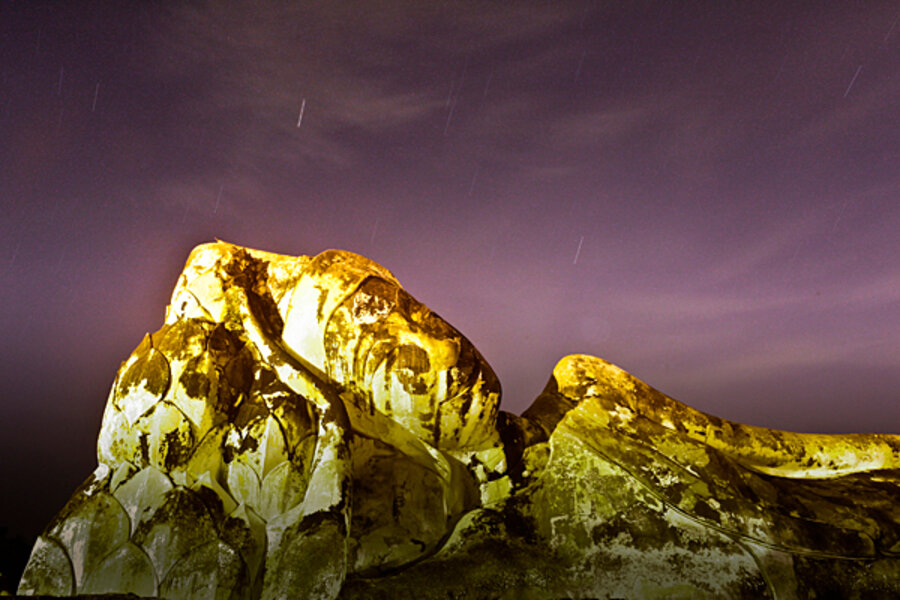Nov. 17-18
When the Leonids are on, they are really on – producing storms of more than 1,000 meteors an hour, versus a more-sedate 12 an hour usually seen at its peak. The parent object for this storm is comet 55P/Tempel-Tuttle, which orbits the sun once every 33 years. One reason for the occasional intensity: the comet's orbit crosses Earth's orbit, so if Earth is plowing through a recent stream, the debris will be more dense than it is in old debris streams.
During those intense bursts, they even have an effect on the moon that is noticeable from Earth. The meteors strike the moon, kicking up dust that contains sodium, and astronomers can measure a tail of sodium that trails behind the moon. The more intense the activity, the longer the tail.
Following the pattern of other meteor showers, the Leonid shower draws its name from the constellation Leo, near where the radiant appears.





